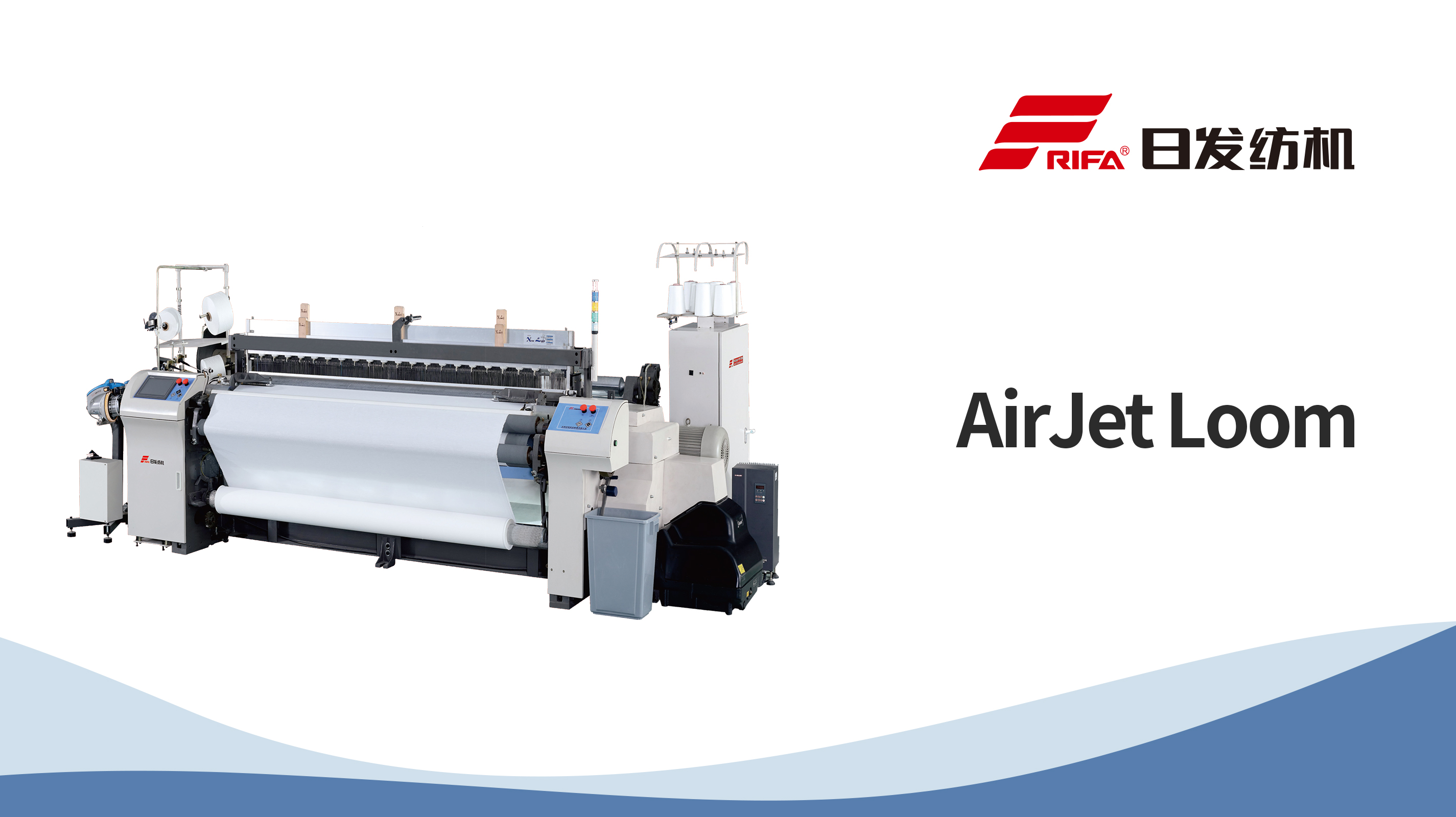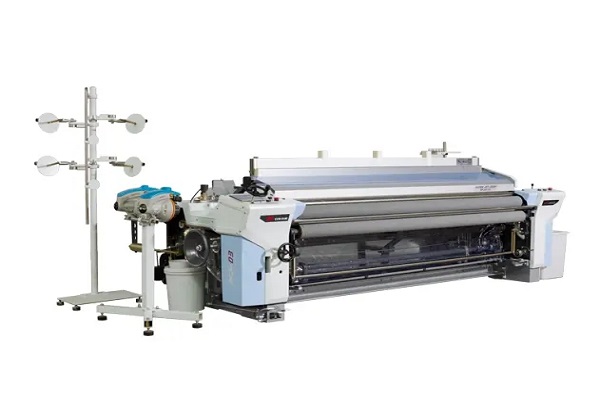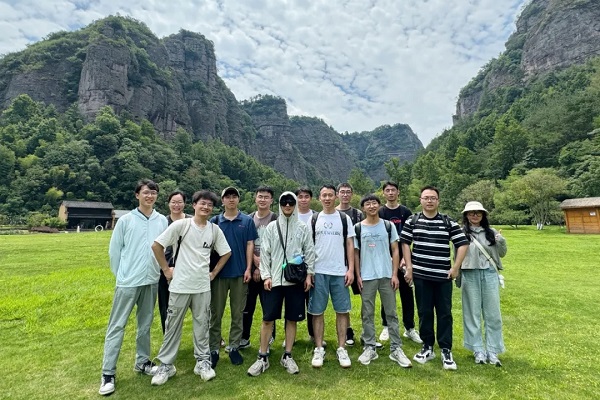There are various classifications of looms. Based on the weft insertion method, they can be classified into shuttle looms and shuttleless looms.
The weft insertion of the shuttle loom uses traditional wooden or plastic shuttles. Due to the large volume and heavy weight of the shuttle, it is repeatedly projected back and forth, causing significant machine vibration, high noise levels, high energy consumption, slow speed, and low efficiency.
The weft insertion methods of shuttleless machine are also diverse, including rapier, air-jet, water-jet, projectile, and multiphase methods.
Among various shuttleless looms, the air-jet loom has the highest speed. Due to its reasonable weft insertion method, it has a high weft insertion rate, and its operation is simple and safe. It has a wide range of adaptability, low material consumption, high efficiency, and other advantages such as high air jet loom speed and low noise. It has become one of the most promising new types of looms.

Early air-jet looms had a very limited scope, mainly producing grey cloth with small widths and low speeds, resulting in limited fabric applications and low fabric quality. However, since the early 1980s, with the development of air jet weaving shaped reeds and relay weft insertion technology, as well as the application of electronic computers, sensors, and variable frequency speed control technology, the speed and automatic monitoring level of air-jet looms have been greatly improved. Especially in the last 10 years, the rapid development of air-jet looms has endowed them with many advantages such as high quality, high speed, high output, and high level of automation. The range of adaptable varieties has greatly increased.
Textile Industry
Chemical Fiber Industry: Air-jet looms occupy an important position in the chemical fiber industry, efficiently and with high quality producing various chemical fiber fabrics such as polyester and nylon.
Natural Fiber Industry: Also suitable for the weaving of natural fibers such as cotton, wool, silk, and linen, meeting the needs of different fabrics.
Special Fiber Industry: With technological development, air-jet weaving machine can also process some special fibers, such as high-performance fibers and smart fibers, bringing more possibilities to the textile industry.
Clothing Industry
Fabrics produced by air-jet weaving machine are widely used in the clothing industry, including fabrics for shirts, suits, coats, pants, and various other garments. Their high efficiency and high precision characteristics make garment production faster and of higher quality.
Home Textiles
Bedding, duvet covers, and curtains, among other home textiles, are also produced using air-jet looms. The fabrics produced are flat, beautiful, and durable, which are appreciated by consumers.
Advanced Technology
RIFA Textile is at the forefront of technological innovation. Their shuttleless machines are equipped with the latest advancements in textile machinery, ensuring high-speed operation, precision, and minimal downtime. This cutting-edge technology translates to superior fabric quality and increased production efficiency.
High Efficiency and Productivity
Shuttleless machines from RIFA Textile are designed to maximize productivity. With faster weaving speeds and reduced cycle times, these machines enable you to produce more fabric in less time. This high efficiency not only boosts your output but also reduces operational costs, making your manufacturing process more cost-effective.
Superior Fabric Quality
Quality is paramount in textile manufacturing, and RIFA Textile’s shuttleless machines deliver exceptional fabric quality. The precise control mechanisms and advanced weaving techniques ensure uniformity, consistency, and minimal defects in the final product. This high-quality output helps you meet stringent industry standards and customer expectations.


